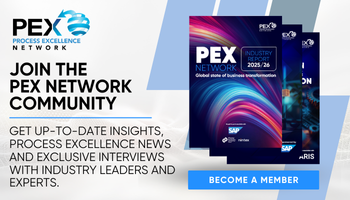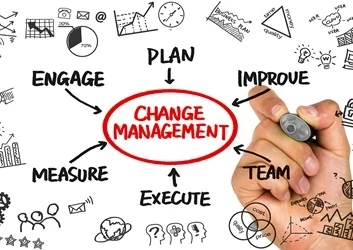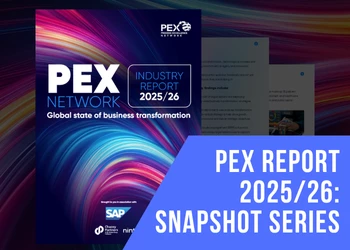How to master change management in the AI era
Upstate Niagara Cooperative’s Julie Whitten says leading a business through AI-driven change is like navigating an eclipse – unsettling, beautiful and temporary
Add bookmark
Mastering change management in the artificial intelligence (AI) era is a complex endeavor. From introducing new risks to reshaping roles and business goals, the arrival and adoption of emerging AI technology is transforming what it means to manage change in modern organizations.
Julie Whitten is a trusted advisor known for driving strategic alignment and organizational resilience with more than 25 years of experience across change leadership, marketing and communications. As VP of change management and communications at Upstate Niagara Dairy Cooperative, she partners with executives to lead through transformation with clarity and impact.
A dynamic speaker and empathetic leader, Julie has guided senior teams across industries and hosted over 300 high-impact broadcasts. She’s also the voice behind Big Girl Panties Diaries – a bold blog series blending humor, honesty and leadership lessons from the trenches of personal and professional growth.
Julie will be speaking at All Access: Change Management for Business Transformation 2025. Ahead of the event, PEX Network spoke with her to get her take on mastering the art of change management in the era of AI.
Join the PEX Network community

Don't miss any news, updates or insider tips from PEX Network by getting them delivered to your inbox. Sign up to our newsletter and join our community of experts.
Learn MorePEX Network: Should leaders shift their change management implementation plans to align with the opportunities and risks of AI?
 Julie Whitten: AI isn’t just another tech implementation – it’s a fundamental shift in how work gets done. Leaders need to move from linear change models to a more human-centered, adaptive approach. That starts with reframing change as a continuous experience, not a one-and-done event.
Julie Whitten: AI isn’t just another tech implementation – it’s a fundamental shift in how work gets done. Leaders need to move from linear change models to a more human-centered, adaptive approach. That starts with reframing change as a continuous experience, not a one-and-done event.
The vision should balance excitement about what AI enables with empathy for the real disruption it causes. Strategy-wise, that means building trust before transformation, co-creating solutions with your teams and prioritizing communication that’s transparent, consistent and two-way.
PEX Network: How does AI change the traditional approach to leading transformation initiatives?
JW: Traditionally, transformation has relied on a well-scripted playbook – complete with training timelines, rollout plans and crisp communications. AI doesn’t follow that playbook. It accelerates uncertainty and exposes the limits of command-and-control leadership.
As I shared in Big Girl Panty Diaries – Entry #12: Leading Through Ambiguity Without Losing Your Mind or Your Panties, leading through AI-driven change is like navigating an eclipse – unsettling, beautiful and temporary. You won’t always have the answers, nd that’s okay. What matters is how you lead in the fog:
- Create clarity where you can.
- Normalize uncertainty.
- Make it safe for people to question and experiment.
AI changes the work, but ambiguity changes the leadership required. The leaders who thrive in this space aren’t the ones with the tightest decks. They’re the ones who can say, “Here’s what we know, here’s what we don’t and here’s how we’ll learn together.”
PEX Network: What does setting the tone for change management look like in an AI-driven organization?
JW: Tone starts with how leaders show up. If you want openness, you have to model it. If you want innovation, you have to reward risk-taking. If you want trust, you have to earn it. AI may run on data, but change still runs on emotion. Leaders set the emotional temperature through behavior – and stories too.
That’s why I opened Entry #9: I Threw Potatoes at Leaders with an exercise of literally tossing potatoes to symbolize anxiety. It was messy, it was real and it let people see their “sticky, shape-shifting” fear in plain sight. Once we dropped the potatoes, we could talk about the future with clarity and courage. That’s the tone AI-driven change requires – playful permission to name fear and space to move beyond it.
Register for All Access: AI in Business Transformation 2025!
PEX Network: How can leaders model the mindset needed to foster trust, openness and adaptability in the face of AI-driven change?
JW: Start by being a learner, not a knower. Vulnerability is powerful, especially when stakes are high. When leaders share their own learning curves, it gives others permission to do the same. Ask questions. Celebrate experiments. Own your misses. That’s how you build trust and adaptability – by showing up as imperfect humans, not unflappable CEOs.
PEX Network: How do you balance optimism about AI’s potential with honest conversations about job displacement and role changes?
JW: Lead with truth and follow with support. People don’t need everything to be rosy – they need it to be real. That means being clear about what’s changing, why it’s necessary and what it means for them. It also means backing that up with reskilling pathways, career coaching and visible investments in people, not just platforms. Optimism without realism feels hollow. Honesty, paired with tangible support, builds credibility and commitment.
PEX Network: What change management training activities help bridge the gap between current workforce capabilities and future AI needs?
JW: Bridging the gap starts with understanding where people really are – what they’re excited about, what they’re worried about and what they need to grow. Then:
- Create protected space to experiment. Let teams test AI tools without fear of failure or judgment.
- Make learning visible. Highlight success stories and the messy middles.
- Reward curiosity, not just outcomes. We can’t upskill without unlearning first.
- Invest in real support, not just videos and checklists. Coaching, mentorship, peer-led training – these all matter.
- Most importantly, signal that the future includes them. That’s how you bridge the capability gap, with strategy and soul.
PEX Network: Any final thoughts?
JW: At the end of the day, AI might automate tasks, but it can’t automate trust. That still starts with leadership. The algorithms will evolve. The platforms will shift, but what won’t change is the human need for clarity, connection and courage. As leaders, we have a choice: to treat AI as a tool for people, not just a replacement of people. That starts by setting the tone – one grounded in curiosity, candor and care. If we get that part right, the technology will follow.
All Access: OPEX Operational Excellence 2025

Operational excellence is a set of practices that helps organizations to improve their efficiency and effectiveness. In 2025, operational excellence will be more important than ever as organizations look to reduce costs and improve customer satisfaction.
All Access: OPEX Operational Excellence 2025 from PEX Network will help professionals get an understanding of the latest developments in operational excellence, including how to identify and improve key processes, how to implement operational excellence initiatives, and how to measure the success of operational excellence initiatives.
Register Now













